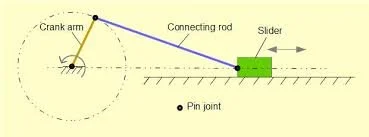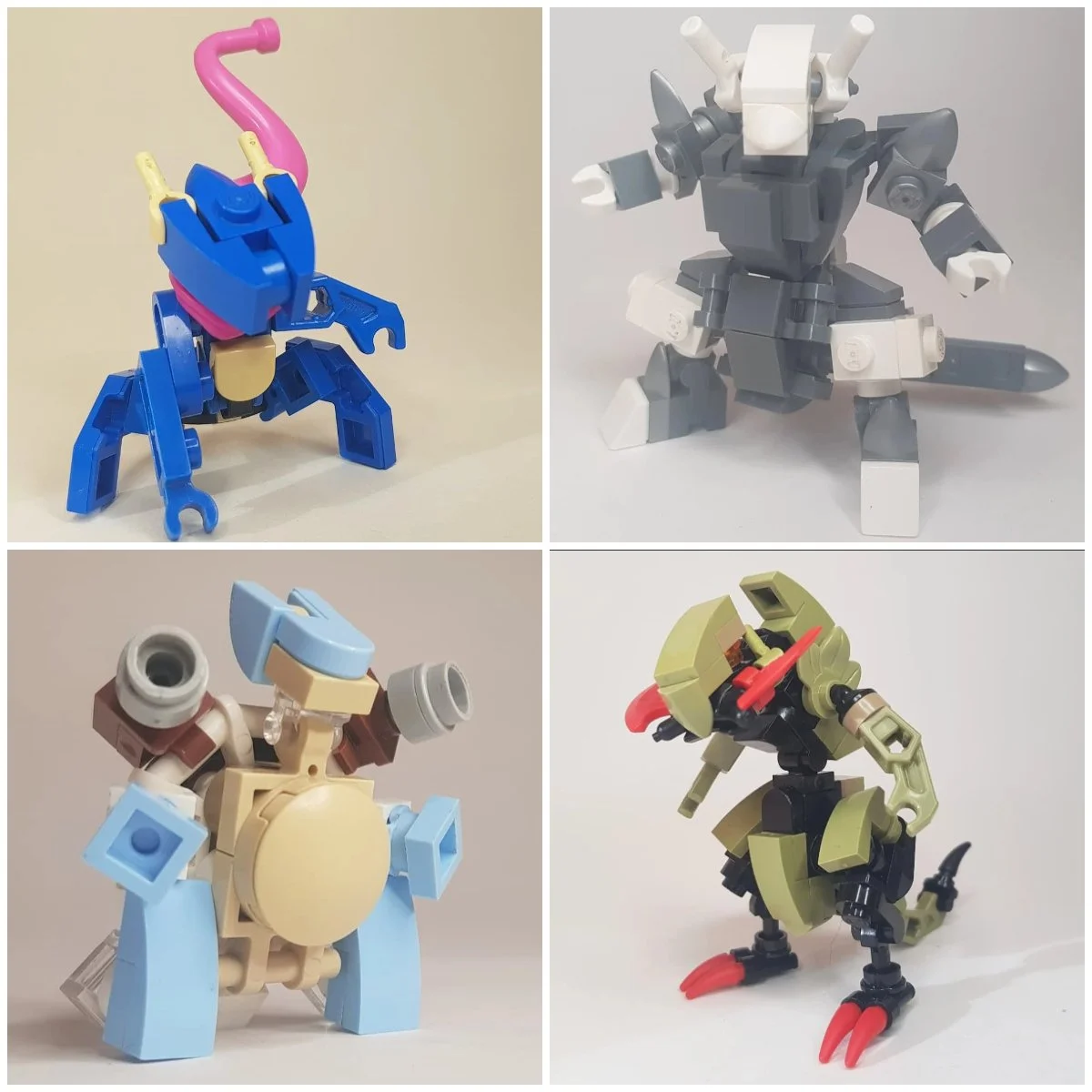The Five Core Mechanisms of Great Ball Contraptions
/I can’t count the times that LEGO builders or even the general public see an awesome GBC (Great Ball Contraption) layout at an event and want to make one themselves… but just don’t know how to get started. So today we are going back to the basics, breaking down GBC modules into their core mechanisms to show how to make balls move.
We’ll explore some of my favorite and most frequently used mechanisms found in almost any GBC module. These core mechanisms enable a wide range of functionalities for transporting balls upwards, and each can be customized to fit whatever your brain can imagine. Even the most complex modules can be broken down into basic movements and mechanisms. There are certainly more ways of moving balls, but these five are the most common in my experience.
Slider-Crank Mechanism
While there are several variants of this mechanism, they all fundamentally operate on the same principle: a rotating crank converts rotational motion into linear motion. This is achieved using a slider-crank mechanism, also known as a four-bar linkage. This versatile mechanism is used in various applications, from real-life engines to GBC modules.
Components of a Slider-Crank Mechanism
Crank: A rotating lever attached to a pivot point. It drives the connecting rod as it rotates.
Connecting Rod: Links the crank to the slider, transmitting rotational motion into linear motion.
Slider: Moves back and forth in a straight line, driven by the connecting rod.
Frame: The stationary part that supports the crank and guides the slider’s linear movement.
The crank rotates around its pivot, moving the connecting rod, which pushes and pulls the slider along a straight path. This process converts the crank’s rotational motion into the slider’s linear motion. If you want to build your own stepper module, I would suggest building an existing module that has instructions online to first to learn the principles of this mechanism. A great module to start with is the sloped stepper by Pinwheel which has free building instructions.
Below are links to some more modules that use the stepper mechanism to its full potential if you want to see it in action:
Ball Pumps
I have mentioned ball pumps before in my article about Building a GBC Module From Start to Finish. I consider this the most user-friendly mechanism to integrate into existing builds or for those wanting to create a themed GBC module. Many builders struggle to combine a detailed module with a ball-lifting mechanism. However, this mechanism only requires space at the bottom of your module and a shaft with a 2x2 hole, making it one of the best mechanisms to integrate into a MOC!
Aqueduct by fellow BrickNerd Andreas Lenander is a perfect example of this. He wrote an article about his module and how he incorporated the pump in “Building a Stylish GBC Module” which resulted in a stellar-looking module. For starters, I would suggest using the mechanism made by Sam Friesen. His ball pump module instructions can be found here.
There are many different designs for ball pumps, but they can be boiled down to two executions.
1. Nail ball pump
With this mechanism, a small nail moves in one direction but not the other. Pinwheels Reveal Module is an excellent example that demonstrates this mechanism. Its use of transparent parts makes the mechanism highly visible, offering a clear view of how the ball pump operates.
Components of the Nail Ball Pump
Ball Holder: This component secures and stabilizes the ball. In the Pinwheel module, an engine piece is used as the ball holder to keep the ball in place.
Pusher: Moves up and down in a straight line by employing the slider-crank mechanism. Its primary function is to push the ball upwards.
Nail: Ensures the ball moves upwards while blocking its descent. It allows movement in one direction (upwards) while restricting movement in the opposite direction (downwards).
Ball Chimney: Located after the nail, this component is where the ball is held temporarily. It typically consists of a 2x2 brick hole and can be scaled upwards depending on the design of your mechanism and drive unit.
2. BAll chamber ball pumps
Although both mechanisms achieve the same result, they operate differently to push balls vertically. The ball pump chamber uses rotational movement instead of linear motion. In this design, the ball is initially lowered into a chamber and then pushed against the frame of the ball chimney. This approach has the advantage of eliminating the need for an additional mechanism to convert rotational movement into linear motion, resulting in a more compact design with fewer components.
Components of the Nail Ball Pump
Pusher: Moves up and down rotationally by employing the slider-crank mechanism. Its primary function is to push the ball upwards.
Ball Chimney: This channel holds the ball. It typically consists of a 2x2 brick hole and can be scaled up depending on the design of your mechanism and drive unit.
Sliding Frame: Enables the horizontal movement necessary for the ball pump to pick up and place the ball.
If you can’t get enough of these ball pumps, here are links to a few more to check out:
Archimedes Screw
The Archimedes screw is a historic and innovative mechanism attributed to the ancient Greek mathematician and engineer Archimedes. It is used to lift water or materials (and now, GBC balls!) from a lower to a higher elevation.
Components of the Archimedes Screw
Screw Shaft: A long, helical screw that rotates within a cylindrical casing or trough.
Cylinder/Trough: The outer casing that holds the screw and contains the material to be moved. It can be either open or enclosed.
There are many variants on the Archimedes screw. Some use slides for the helix, others like Akiyuki use skateboard ramps and ribbed hoses:
Some other Archimedes screw modules to check out:
Just A Wheel
Wheel GBC modules are great, especially because they can pick up balls from very low heights—even as low as one brick high—which is hard for other mechanisms to achieve because usually that space is used for gearing. Riku Katsumata has made a perfect module to showcase the wheel’s lifting capabilities by rotating the wheel towards the viewer of the loop!
There are many different wheel module designs out there with free building instructions that you can start with, including my own SawBlade module using part 87745:
There are many variants of modules using wheels in different ways in GBC modules. Here is a list of a few of them:
Spring Shooter
There are many ways to shoot a ball using weights, wheels, elastic bands, and springs. Elastic bands and springs use similar mechanisms, with the main difference being the direction in which they move. For instance, rotating disks, like the ones Akiyuki uses with small holes in the disk, can also be used. When the spring is activated, it powers the mechanism to launch a ball.
Components of the spring mechanism
Spring: Stores energy when compressed.
Trigger: Releases the spring. In this case, the trigger is the hole in the wheel.
As with all the mechanisms discussed, there are many variants, including my own Soccer Shooter, which I posted about on BrickNerd. If you want to shoot something very accurately like ahoop, adding a linear actuator to adjust the tension on the spring can be helpful.
Below are some other GBC modules that use springs in one way or another to launch a ball:
Go Build a GBC!
Yes, building a Great Ball Contraption can seem daunting. But even the most impressive GBC modules likely have at least one of these five mechanisms hidden inside. These core mechanisms are the key to transporting balls upwards—and even better, each can be modified into a MOC or placed into a bigger loop. So go build a GBC, but be warned! Building modules can be quite addictive…
Best of BrickNerd - Article originally published July 24, 2024.
Have you used any of these mechanisms? Let us know in the comments below!
Do you want to help BrickNerd continue publishing articles like this one? Become a top patron like Charlie Stephens, Marc & Liz Puleo, Paige Mueller, Rob Klingberg from Brickstuff, John & Joshua Hanlon from Beyond the Brick, Megan Lum, Andy Price, Lukas Kurth from StoneWars, Wayne Tyler, Monica Innis, Dan Church, and Roxanne Baxter to show your support, get early access, exclusive swag and more.
























